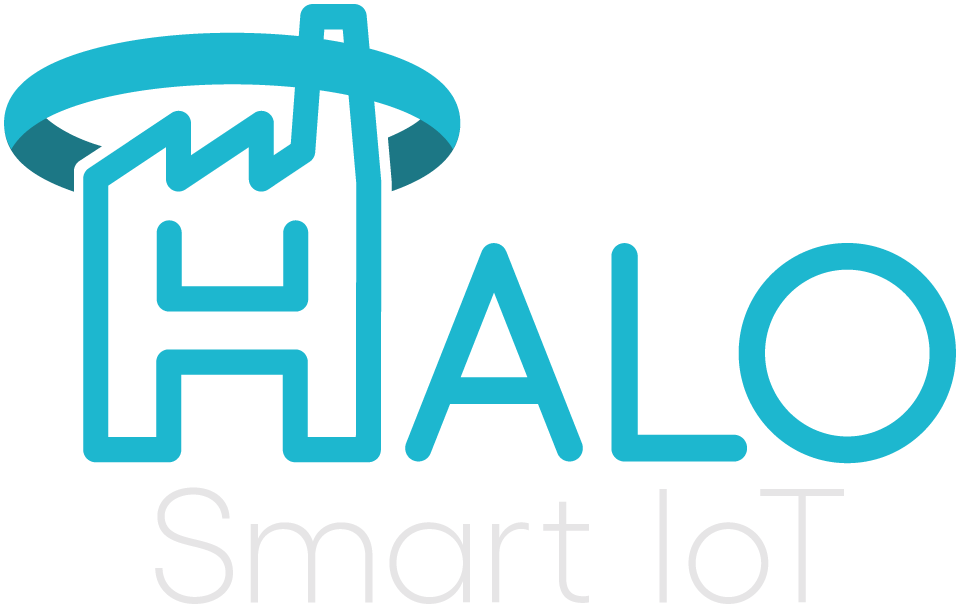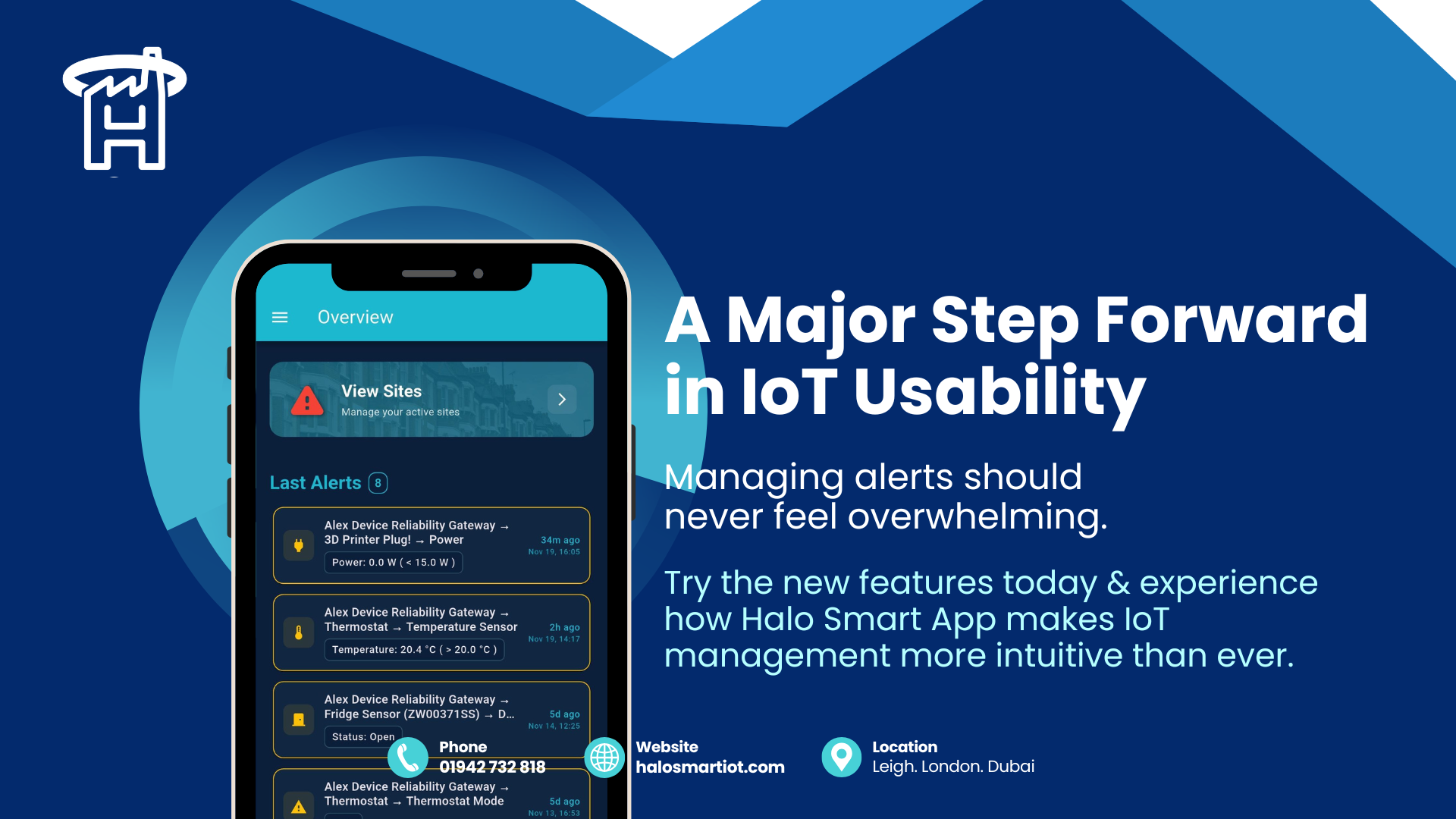No one should face fuel poverty at Christmas. Halo’s Fuel Poverty Reporting & IAQ Sensors empower housing providers to act. Create warmer, safer, and healthier homes this festive season.
On the third day of Halo Christmas | Halo’s Leak Detection Sensor
Frozen pipes don’t just ruin Christmas cheer, they cause costly damage and disruption. Halo’s Leak Detection Sensor helps you stay one step ahead. This winter, let smart technology do the watching, so you can focus on what matters most.
Awaab’s law and damp and mould: what challenges worry housing providers the most?
Awaab’s Law has brought housing safety into sharp focus. Damp and mould are no longer issues that can be left to linger, they demand immediate, accountable action. Head on over to join the conversation on ‘What’s your biggest concern with Awaab’s Law?’ over on our LinkedIn. Vote now and share your perspective, your insights help shape the conversation around safer, healthier homes. Halo Smart IoT Damp & Mould Solution At Halo Smart IoT, we know that compliance isn’t just about ticking boxes, it’s about protecting people, preventing risk, and building trust. That’s why our technology is designed to make housing providers proactive, not reactive. What We Offer: Smart Damp & Mould Solutions Halo Smart IoT is here to help you turn compliance challenges into proactive housing excellence, let us help you gain knowledge and confidence in your building.
On the second day of Halo Christmas | Halo’s 4-in-1 Sensor
This Christmas, give your properties the gift of compliance. With Awaab’s Law now placing stricter responsibilities on landlords to tackle damp and mould, Halo’s 4-in-1 Sensor is here to help. Give peace of mind for housing providers, stay compliant and provide healthier homes for your residents.
On the first day of Halo Christmas | Halo Smart Gateway
We’re unwrapping the power of the Halo Smart Gateway, the heart of smarter, safer and healthier living. From seamless compatibility to monitoring and control, Halo is here to make buildings work for you. Stay tuned as we count down 12 days of festive features, benefits and a few surprises that show why Halo is the gateway to smarter and happier homes .
50% OFF Selected Halo Sensors This Black Friday Weekend
This Black Friday weekend, take full control of your environment for less. Just look at these amazing deals to help you save money on monitoring, access control, staying compliant and making places and spaces more energy-efficient: 50% OFF selected Halo sensors with every Halo gateway order Our smart sensors monitor and control a range of environments: 50% OFF! 2 in 1 Sensor, Temperature and Door Monitor 50% OFF! IAQ (Indoor Air Quality) Wellbeing sensor Space Air Quality TVOC with Auxiliary CO2 50% OFF! Smart Plug These exclusive deals are available for limited time – contact the Halo Smart team today to secure your money-saving Black Friday deals. 📞 01942 732819 📩 sales@halosmartiot.com
A major step forward in IoT usability
Let’s just say we love receiving Halo Smart app user’s feedback. And we don’t just listen, we act. That’s why we’re excited to introduce a major update to the Halo Smart app – a major step forward in IoT usability, transforming how users interact with alerts, notifications, and site navigation. Managing connected devices should be simple, intuitive and reliable. This release is designed to give you greater clarity, faster response times, and a more streamlined experience across all your smart environments. Whether you’re overseeing a single site or managing a global portfolio, the new features make IoT management easier than ever before. Notifications and alerts: Clarity you can trust Managing alerts should never feel overwhelming. That’s why we’ve introduced: These improvements mean you can trust your alerts and act on them with confidence. Smarter site and device navigation Managing multiple sites can be complex. Our new navigation tools make it effortless: These exciting new features give you a bird’s-eye view of your operations, while still allowing you to drill down into the details, if and when needed. Why this matters Our new app improvements are focused on empowering users, as part of our mission to make IoT usability simpler, smarter, and more intuitive across every smart environment. Take the app for a test drive Update your Halo Smart app to explore these new features and experience the difference for yourself. With smarter alerts and navigation, managing your connected world has never been easier. Try the new Halo Smart features today and experience how Halo makes IoT usability and management more intuitive than ever. Or if you’re ready to start your Halo Smart journey to safer and smarter housing, get in touch today! 📞 01942 732819 📩 sales@halosmartiot.com
Halo Smart IoT: Turn housing stress into housing security
It’s a shocking statistic – 40% of renters admit feeling stressed because of damp, mould and excessive cold in their homes. Behind that disturbing number are real families worried about their children’s health, individuals struggling with energy bills, and people facing the hidden costs of poor housing conditions. The impact on housing security goes far beyond slight discomfort: At Halo Smart IoT, we know that the right technology can be part of the solution to put things right. What’s more, it’s cost-effective, quick and easy to implement. Our smart monitoring systems give landlords and housing providers real‑time insights into property conditions, from humidity and temperature to early signs of mould risk. Fitted within minutes, Halo Smart’s wireless sensors can: Every renter deserves to enjoy a safe and healthy living environment, and every housing provider deserves the tools to make that possible. Learn how Halo Smart IoT can help reduce the stress for you and your tenants. 📞 01942 732819 📩 sales@halosmartiot.com
Can compliance be less complicated?
Awaab’s Law sets new standards for safer, healthier homes. But what about older housing stock where rewiring may not be practical? The introduction of Awaab’s Law has sharpened the focus on housing providers’ responsibility to ensure safe living environments in both new-builds and existing housing. For many, the biggest challenge lies in older housing stock where rewiring or disruptive upgrades seem increasingly daunting. This is where Halo Smart IoT sensors come in – super-fast to install, low profile, wireless with minimum disruption – making compliance achievable across even older estates. Halo Smart IoT sensors make compliance achievable in legacy housing: Technology should make compliance easier, not harder. By making compliance practical and easy across all housing stock, we’re helping housing providers protect tenants, meet their obligations and build trust with their tenants. Thanks to Halo Smart IoT there is no excuse – legacy buildings don’t have to get left behind. Learn more about how Halo can support you in achieving and staying compliant across your housing stock. 📞 01942 732819 📩 sales@halosmartiot.com
Awaab’s Law Is Now in Effect – The UK’s Mould Crisis Needs Smart Action
Awaab’s Law is now in effect, and the scale of the UK’s mould crisis demands urgent, intelligent action. The passing of Awaab’s Law marks a watershed moment in UK housing legislation. Named after two-year-old Awaab Ishak, who tragically died in 2020 due to prolonged exposure to mould in his social housing flat, the law now mandates that social landlords must investigate significant damp and mould within 10 working days and make properties safe within 5. Emergency hazards must be addressed within 24 hours. But the scale of the challenge is vast. According to BBC InDepth and government data: These are not just numbers. They represent real families, lives and health risks. Halo Smart IoT can help housing providers stay compliant and keep tenants safe. Our smart environmental monitoring systems offer: Whether you’re a housing association, local council, or private landlord, Halo Smart IoT helps you move from reactive to proactive, ensuring safe, healthy homes for all tenants. Let’s make sure Awaab’s legacy leads to lasting change. Join us in transforming housing safety through smart technology.










